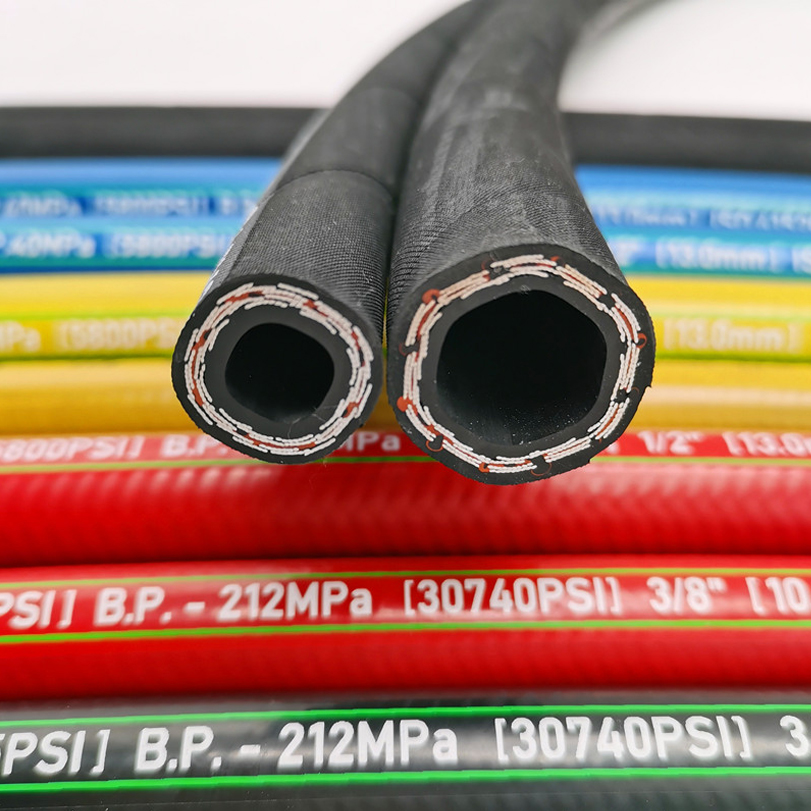335345435
Oct . 02, 2024 10:49 Back to list
100r16 hydraulic hose
Understanding the 100R16 Hydraulic Hose
Hydraulic hoses play a crucial role in various industries, providing the necessary connection for fluid power applications. One of the essential specifications in the realm of hydraulic hoses is the 100R16 standard. This standard designates a specific type of hydraulic hose designed to handle high-pressure and high-temperature hydraulic fluids, making it a vital component in many hydraulic systems.
What is 100R16?
The designation 100R16 is part of a series of SAE (Society of Automotive Engineers) specifications that outline the criteria for hydraulic hoses. Specifically, the R16 category refers to hoses with a rubber cover and a textile or wire braid reinforcement. These hoses are designed for high-pressure applications, which makes them ideal for industries such as agriculture, construction, and manufacturing, where hydraulic systems are prevalent.
Construction and Features
A typical 100R16 hydraulic hose consists of three main components the inner tube, reinforcement layer, and outer cover.
1. Inner Tube The inner tube is made from synthetic rubber, designed to be compatible with various hydraulic fluids, including petroleum-based oils and water-based fluids. This compatibility is crucial for maintaining the integrity and lifespan of the hose.
2. Reinforcement Layer One of the critical characteristics of the 100R16 specification is the reinforcement layer, which is typically made of one or more layers of high-tensile steel wire or textile braid. This reinforcement allows the hose to withstand high pressures, often exceeding 3000 psi, depending on the size and construction of the hose. The robust nature of this layer prevents bulging and ensures durability under pressurized conditions.
3. Outer Cover The outer cover is designed to protect the hose from environmental factors such as abrasion, UV light, and extreme weather conditions. It is made from durable materials that enhance the hose’s lifespan and provide additional safety in high-risk environments.
100r16 hydraulic hose

Applications
The versatility of 100R16 hydraulic hoses makes them suitable for various applications across multiple industries. Some common applications include
- Agriculture Hydraulic systems in tractors and other farming equipment rely heavily on 100R16 hoses for efficient operation, enabling tasks like plowing, planting, and harvesting. - Construction Heavy machinery such as excavators and bulldozers utilize these hoses to power hydraulic systems that operate hydraulic arms, lifting equipment, and other attachments.
- Manufacturing In manufacturing plants, hydraulic hoses are crucial for driving machinery such as presses, conveyors, and robotics, contributing to increased efficiency and productivity.
Safety and Maintenance
While 100R16 hydraulic hoses are built to withstand rigorous conditions, safety and maintenance are paramount. Regular inspections for wear, abrasion, and leaks are essential to prevent hydraulic failures that can lead to operational downtime and possible safety hazards. Proper storage and handling of these hoses can also extend their lifespan and performance.
Conclusion
The 100R16 hydraulic hose is an indispensable part of modern hydraulic systems, known for its robust construction and ability to handle high pressure. Its applications span a wide range of industries, showcasing its versatility and reliability. By understanding its specifications and ensuring proper maintenance, users can maximize the efficiency and safety of their hydraulic systems, contributing to overall productivity and performance in their operations.
-
SAE 100 R17 Black Smooth Cover Hydraulic Hose
NewsMar.07,2025
-
SAE 100 R17 Black Smooth Cover Hydraulic Hose
NewsMar.07,2025
-
SAE 100 R17 Black Smooth Cover Hydraulic Hose
NewsMar.07,2025
-
SAE 100 R17 Black Smooth Cover Hydraulic Hose
NewsMar.07,2025
-
SAE 100 R17 Black Smooth Cover Hydraulic Hose
NewsMar.07,2025
-
steel wire braided hydraulic hose
NewsMar.07,2025



